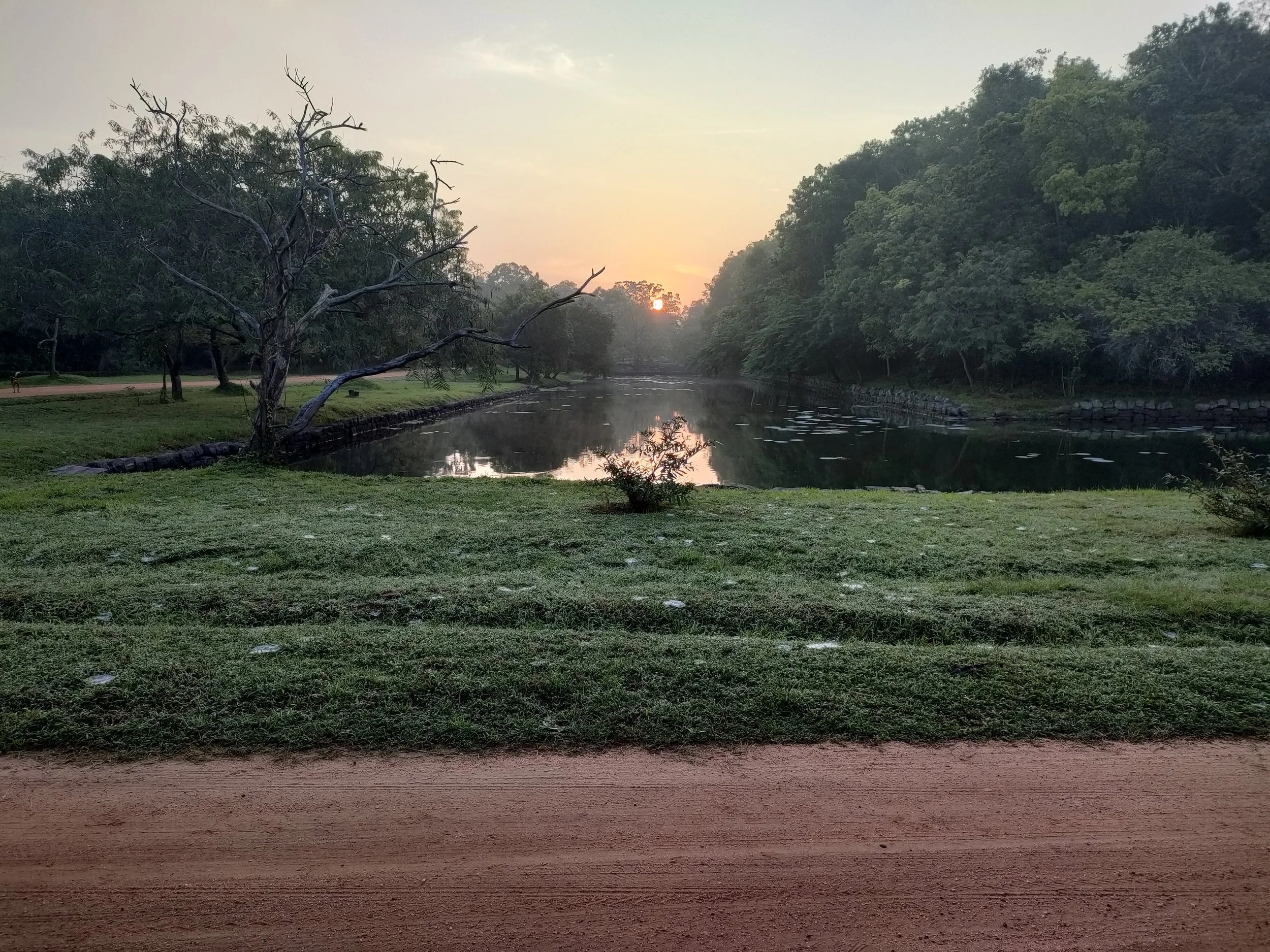Sigiriya:Fortress of Dreams and Stone.
Where lions once roared from the rock, only echoes remain.
High above the dense forests of central Sri Lanka, a colossal monolith rises — a fortress, a palace, and a dream carved into stone. Sigiriya is not merely a marvel of ancient engineering; it is a story etched into the very bones of the earth.
Once the citadel of a king and later the quiet refuge of monks, Sigiriya stands today as one of the world’s most extraordinary UNESCO World Heritage Sites. A place where history, myth, and mystery intertwine.
Sigiriya Rock — a solitary giant rising from the jungle, where stone meets sky and legend was carved into the heart of Sri Lanka.
The Rock: Nature’s Throne.
Formed from hardened magma of an ancient volcano, Sigiriya towers nearly 200 metres above the surrounding plains. Its summit, flat and commanding, gazes across the endless green of Sri Lanka’s central heartlands.
It was here, around the 5th century AD, that King Kashyapa chose to build his capital. Defying nature, he sought to turn this brooding rock into a fortress of the gods — part palace, part symbol of untouchable power.
The grand approach to Sigiriya: a ceremonial causeway through ancient water gardens, once designed to impress all who dared ascend the Lion Rock.
The Lion Gate: Guardian of Dreams.
At the halfway point of the ascent, two colossal lion’s paws emerge from the rock itself, flanking the narrow staircase that once led into the heart of Kashyapa’s skybound palace.
Once, visitors would have entered through a full lion-shaped gateway — jaws wide open, paws spread in silent challenge. Today, only the massive paws survive, but their presence still dominates the climb, a reminder of vanished grandeur.
The Lion’s Paws of Sigiriya: colossal guardians carved from stone, marking the final ascent to King Kashyapa’s sky palace.
Water Gardens and the Mirror Wall.
Below the fortress, the gardens unfold with a geometry and grace unmatched in their age. Pools, moats, fountains, and island pavilions blend seamlessly with the natural landscape, using subtle hydraulic systems that still function during the monsoon rains.
Further up, the famous Mirror Wall once gleamed with such polish that visitors could admire their reflections as they walked. Along its faded surface, poems and carvings still whisper across the centuries — declarations of love, pride, wonder, and longing from forgotten voices.
Sunset over Sigiriya’s ancient water gardens — where reflections whisper stories of kings, monks, and fallen empires.
The Cloud Maidens: Divine Beauty Captured.
Sheltered within a rock alcove, a series of ethereal figures gaze out across time — the frescoes known as the Cloud Maidens.
These celestial women, adorned with jewellery and delicate smiles, float weightlessly against a backdrop of painted mist and sky. They are thought to represent either apsaras (celestial nymphs) or royal attendants, though their true meaning remains elusive.
The Sigiriya Maidens: ethereal figures painted onto the rock face, their timeless beauty and mystery surviving fifteen centuries of sun, rain, and reverence.
The vibrant colours and flowing forms of the frescoes, preserved for fifteen centuries, capture not only beauty but the spirit of an age.
The Summit: Where Time Stands Still.
The final climb is steep and exposed, clinging to stairways bolted into sheer cliff faces. At the summit, ruins scatter the flattened rock — the ghostly remains of palaces, pavilions, and bathing pools.
The winds here are sharp and tireless, tugging at the last fragments of a king’s ambition. From this height, the world below seems distant, unreal, a reminder that earthly glories are always fleeting.
A bird’s-eye view of Sigiriya’s ancient water gardens — a masterpiece of symmetry, hydraulic engineering, and timeless design, leading the way toward the Lion Rock.
The Forgotten Fortress: Echoes of Kashyapa’s Dream.
Among the broken stones and weathered foundations, the old fortifications of Kashyapa’s summit dream can still be traced.
Here, narrow stairways wind through ruined chambers and a throne-like platform commands the view across forests and distant hills.
The palace that once rose into the heavens has returned to the earth, stone by stone.
The ancient throne carved in stone — the seat where King Kashyapa once ruled from the heights of Sigiriya, commanding both kingdom and sky.
The royal bathing pool at the summit of Sigiriya — a glittering oasis carved into the rock, where water once mirrored the skies above the king's hidden palace.
The summit ruins of Sigiriya — crumbling walls, terraces, and water systems whisper of a vanished palace that once ruled the skies.
The winding, hidden stairways of Sigiriya, where stone pathways squeeze between ancient boulders, lead deeper into the mysteries of the rock fortress.
Each crumbling wall tells a story of ambition, isolation, and the slow, inevitable reclaiming power of nature.
Echoes and Edges Reflection.
Sigiriya is not merely a relic — it is a conversation between stone, water, jungle, and sky.
It is the memory of kings and monks, soldiers and lovers, caught forever in a silent dialogue with the earth.
At Echoes and Edges, we seek these places — where memory clings to landscape and the margins between history and myth are blurred.
Sigiriya reminds us that the past is not a separate country. It is written into the rocks beneath our feet.











